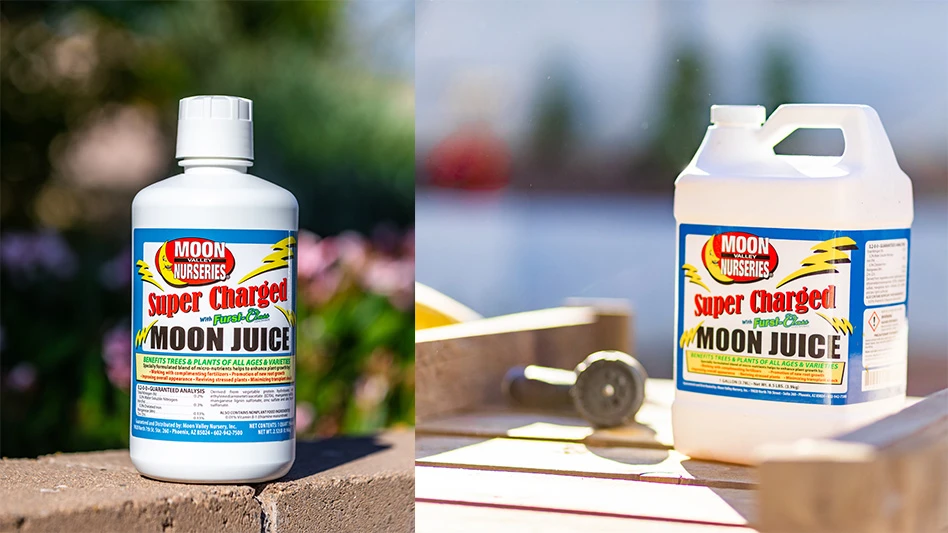 These hibiscus are being grown in Florida using a biological control program. These hibiscus are being grown in Florida using a biological control program. |
It is said that perception is reality. Not always. Preconceived notions are often very strong and hard to change. One perception in our industry is that biological control programs are expensive, costing more than traditional pesticide spray programs.
I did a survey about 12 years ago of growers in Florida. I asked if they used biological control in their current pest management program. Of those that said yes, I asked them if it was cost effective. Many say it was more expensive than chemical pesticide applications. I then asked how much a year they spent on biological control, and almost no one could tell me. How can you say it's more expensive when you don't know how much you are spending on it? This goes back to some basic business principals - know what your expenses are before deciding a product or practice is too expensive.
Many people ask, "Is a biological control program going to cost me more than my traditional spray program?" My answer usually is, "It depends."
That may not be the answer most people want to hear, but it's accurate. There are so many variables that go into a biological pest management program, there is not one answer for all situations. Take spider mites, for instance. This pest can be quite a problem for many growers in the southern states. I know growers that have sprayed miticides every three days to try and control this explosive pest, yet they are still not able to control it. This is because the mite pressure is so high, and spray coverage is hard to get with mites living on the underside of the leaves and pot-tight growing conditions. In this situation, releasing predatory mites can be an economical option. Predatory mites do well on plants that are touching, allowing the predatory mites to move around easily.
Specifics
|
Problem: Myths regarding biological controls
Myth vs. Reality:
- Myth: You can't spray pesticides when using biological control agents.
Fact: Many growers combine the use of beneficials in conjunction with pesticides. Every day we are learning more about the compatibility between these two tools.
- Myth: Biological controls are more expensive than traditional pesticide applications
Fact: Know the real costs of inputs. Many beneficial have come down in price. And several considerations for the cost of pest control often are not calculated, such as spray drift, re-application, pesticide resistance and employee health.
Real world example:
Multiple management tools exist including systemic and contact insecticides, as well as softer products such as soaps and oils. Several biological controls are also effective. |
For growers in northern states that only have to spray a few times a growing season for spider mites, predatory mites may be more expensive than a few applications of a miticide or horticultural oil. Despite having the same pest, one grower finds it more economical with a traditional chemical pesticide approach, while the other benefits more from a biological control approach.
Something else about spider mite management many growers may not realize is that the cost of the predatory mite used to control spider mites (Phytoseiulus persimilis) has gone down in price through the years. Fifteen years ago a bottle of P. persimilis cost around $20 a bottle of 2,000 mites. Today, depending on the supplier, a bottle costs around $15.38. There aren't many other inputs in a grower's operation that have decreased in price during the last few years.
Some of the prices of other beneficials have come down. With more biological suppliers in the market place, this means more competition. And biocontrol producers are getting better at rearing beneficials and passing on their productivity in price savings to the grower.
Calculating Costs
When evaluating the costs of biocontrol vs. traditional spray programs, growers should look at the pest itself. There are not commercial biological control options for all of the pests growers face. But there are commercially reared beneficials that work well against fungus gnats, some thrips species, spider mites, aphids, leaf miners, some caterpillar species, weevil grubs and whiteflies. On the flip side, there are not many commercially available biocontrol options for scales, mealybugs, flea beetles, grasshoppers, lacebugs or some of the less common pests. With scale (which also includes mealybugs) there are a few commercial biological options, but they can be expensive and only offer suppression. With several neonicotinoid pesticides (Safari, Merit, Marathon, Flagship, Meridian) with systemic activity, it's a less complicated way to treat for tough pests like scales.
However, there are some naturally occurring beneficials that can help for free. By being selective when choosing an insecticide and timing your treatment properly, you can preserve these natural predators. Also, most horticultural oils are quite economical. Since oil usually provide excellent control of many scale pests, it's hard to compete on price.
 Pot-tight growing conditions are ideal for biological control programs. Pot-tight growing conditions are ideal for biological control programs. |
Other Cost Considerations
How do you know if a biological control program is economical? It can be hard to calculate an exact number. You can compare the cost of a tank of pesticide to the cost of a shipment of biocontrol agents, but that will not give the true overall cost. You also need to consider how often products need to be reapplied. It's difficult to calculate the cost savings of not having any down time caused by re-entry intervals when using biological control agents, but it is a savings.
When looking at the cost of a tank of pesticide, calculate the wear and tear on equipment. Consider the cost of protective spray equipment, which is not needed when releasing beneficials. A huge cost saving is not having to worry about spray drift or its liability to your business. Note the value of preventing resistant problems to pesticides. Some growers have found that while on a biological control program, if they need to come in with a pesticide spray, the pesticides work very well because the pests have not had repeated exposure to the chemical.
There's a large value on minimizing your employees' exposure to pesticides.
And when the plants leave your growing operation, some of your beneficials go with the plants and continue to protect them – a bonus for your customers.
If you looked at biological control in the past and thought it was too expensive, it might be time to look at it again.
|








